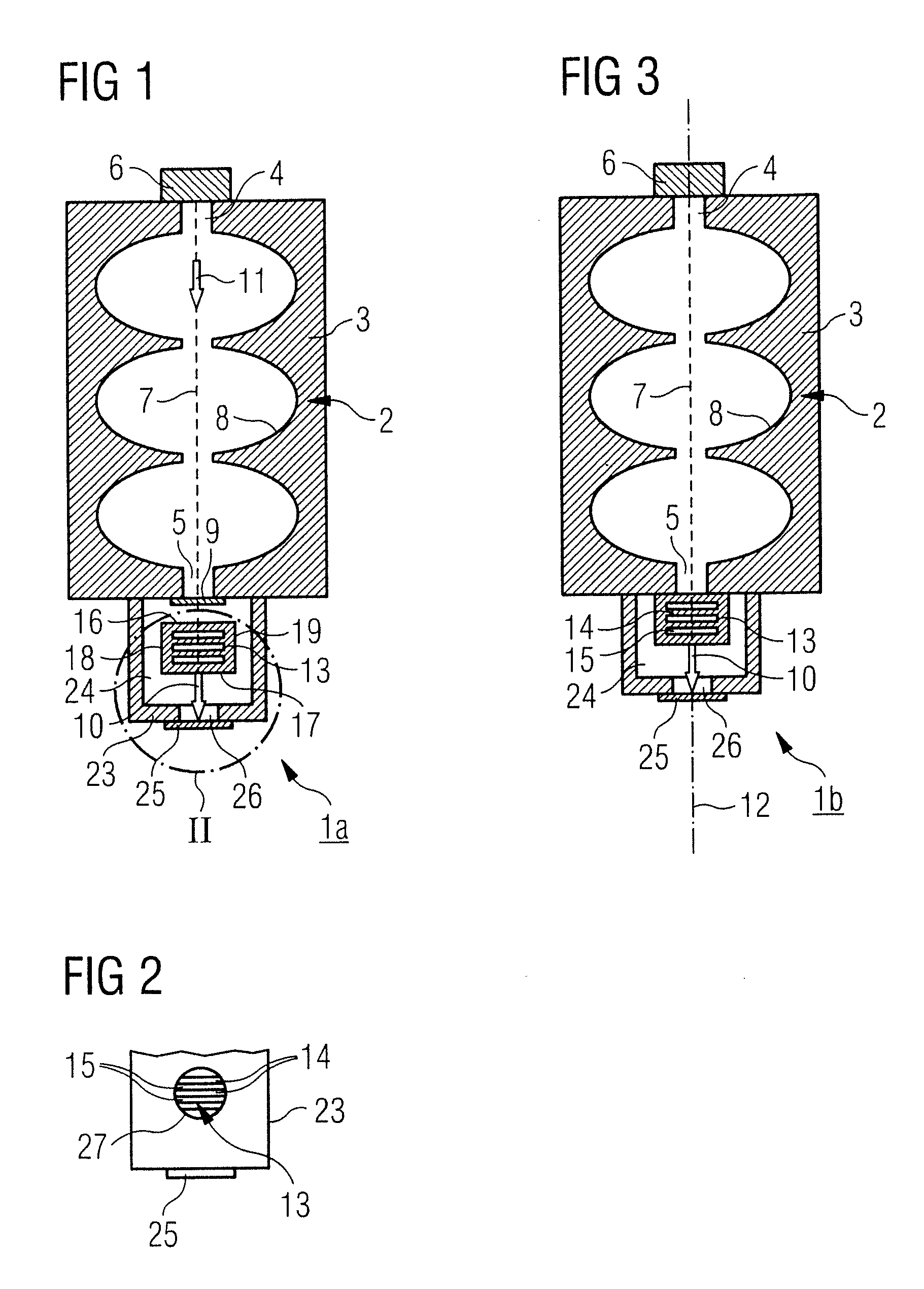Electron accelerator to generate a photon beam with an energy of more than 0.5 mev
a photon beam and accelerator technology, applied in the direction of x-ray tubes, nuclear targets, incadescent cooling arrangements, etc., can solve the problems of melting, failure of the entire apparatus, design that ensures a long-term, functionally capable bearing, etc., and achieve the effect of preventing thermal overloading of the targ
- Summary
- Abstract
- Description
- Claims
- Application Information
AI Technical Summary
Benefits of technology
Problems solved by technology
Method used
Image
Examples
first embodiment
[0019]In the first embodiment variant of an electron accelerator 1a that is shown in FIGS. 1 through 3, the exit opening 5 is sealed in a vacuum-tight manner. In the case of FIG. 1, this ensues via a window 9 that is permeable to the electron beam 7, for example a window 9 consisting of titanium. A target 13 serving to convert the electron beam 7 into a Bremsstrahlung or into a photon beam 10 is positioned outside of the vacuum chamber and, due to the window 9, is not in fluid connection with the vacuum present in the vacuum chamber. The photon beam 10 emitted by the target 13 exhibits the same direction as the electron beam 7; both beams thus travel in the direction of a common beam axis 12 which penetrates the target 13. The target 13 (composed, for example, of tungsten, possibly with alloy additives) has multiple material layers 14 fashioned like lamellae. The material layers 14 are spaced (as viewed in the beam direction 11), wherein an approximately slit-shaped cooling channel ...
second embodiment
[0023]In the second embodiment variant of an electron accelerator 1c shown in FIG. 4, the target 13 is arranged in a space 29 surrounded by the housing 3 of the vacuum chamber 2. The space 29 is connected with the vacuum chamber 2 via the exit opening 5. The same vacuum as in the vacuum chamber 2 thus exists in the space 29. The space 29 does not necessarily need to be surrounded by the housing 3 of the vacuum chamber 2. Here it can also be a separate housing. In any case, a through-opening 30 is present in the wall that is sealed vacuum tight with an exit window 25 permeable to the photon beam 10. The space 29 is permeated vacuum-tight by a sub-segment of a coolant circuit 33. For this the housing wall 34 surrounding the space 29 is provided with through-openings 35 through which a tube conduit 36 is directed. The target 13 is respectively connected to the tube conduit 26 with its facing sides 19 into which the cooling channels 15 empty.
PUM
 Login to View More
Login to View More Abstract
Description
Claims
Application Information
 Login to View More
Login to View More - R&D
- Intellectual Property
- Life Sciences
- Materials
- Tech Scout
- Unparalleled Data Quality
- Higher Quality Content
- 60% Fewer Hallucinations
Browse by: Latest US Patents, China's latest patents, Technical Efficacy Thesaurus, Application Domain, Technology Topic, Popular Technical Reports.
© 2025 PatSnap. All rights reserved.Legal|Privacy policy|Modern Slavery Act Transparency Statement|Sitemap|About US| Contact US: help@patsnap.com



